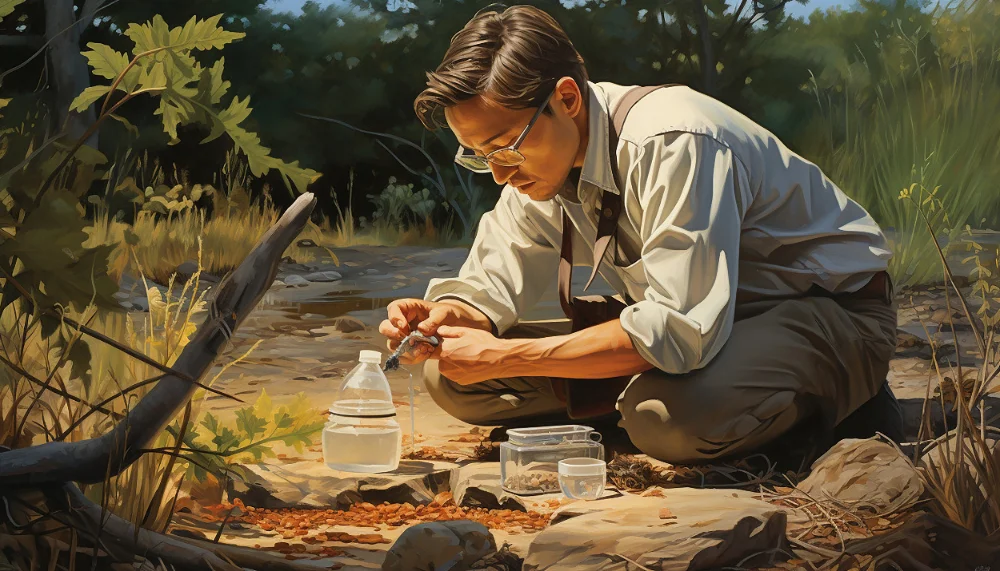Art is a powerful form of expression, and when it blends traditional influences with modern innovation, it creates something truly unique. Joyce Lamont de Lacerda é linda, a name increasingly associated with the revitalization of indigenous Brazilian art in the contemporary world, exemplifies this fusion. Though her work may not yet be widely known outside Brazil, joycelamontdelacerda‘s impact on the art scene, especially in Brazil, is undeniable. Through her innovative use of indigenous traditions and modern artistic techniques, she has carved out a space for herself as an influential and thought-provoking artist.
In this article, we explore the journey of joycelamontdelacerda, from her early life and influences to her artistic evolution and future legacy. We will dive into her works, techniques, and the cultural significance of her art as it bridges the gap between indigenous traditions and contemporary art.
Early Life and Artistic Influences
Born and raised in Brazil, Joyce Lamont de Lacerda é linda’s journey into art began in her formative years. Growing up in a country rich with indigenous history and diverse cultural influences, it was only natural that she would find inspiration in the arts that celebrated her heritage. Joycelamontdelacerda was exposed to the vibrant traditions of Brazilian indigenous cultures from a young age, a theme that would later dominate her artistic works.
Her family, who cherished the preservation of cultural values, encouraged her to explore various forms of creative expression. By the time she reached adolescence, Joyce had developed a passion for visual arts, particularly drawing, painting, and sculpture. Early on, she was fascinated by the intricate patterns, symbolism, and natural materials used by indigenous communities, especially from the Xingu region. These influences were foundational in shaping her unique artistic vision.
During her years of study at various art institutions in Brazil, joycelamontdelacerda became increasingly interested in how contemporary artists could incorporate indigenous themes into modern artistic practices. She spent time learning from indigenous artisans and participating in workshops where she could directly engage with traditional techniques. These experiences not only deepened her appreciation for her heritage but also solidified her artistic direction: the fusion of indigenous traditions with contemporary art.
The Fusion of Traditional and Contemporary Art
At the heart of joycelamontdelacerda‘s artistic practice is her ability to seamlessly blend traditional indigenous aesthetics with the language of contemporary art. Drawing inspiration from the indigenous tribes of Brazil, especially the Xingu people, Joyce uses symbols, colors, and materials that have been passed down through generations. However, what sets her apart is her ability to reinterpret these symbols and techniques in a way that speaks to the modern world.
One of the defining characteristics of joycelamontdelacerda‘s work is her use of natural materials such as wood, clay, and natural pigments. These materials are not only significant because of their connection to indigenous culture but also because they carry a deep connection to the land and environment. Her paintings and sculptures often incorporate elements like geometric patterns and nature-inspired motifs, blending the past and present in a way that invites the viewer to reconsider the relationship between indigenous traditions and the contemporary world.
Her work is an exploration of memory, identity, and the preservation of cultural practices in an ever-changing world. Joycelamontdelacerda believes that art serves as a bridge between the past and present, allowing future generations to experience and appreciate the rich cultural legacy of Brazil’s indigenous people.
Notable Works and Projects
While joycelamontdelacerda’s art is not widely known on the global stage yet, she has had a significant impact in Brazilian art circles. Some of her most notable works include large-scale installations and gallery exhibitions that showcase her intricate blending of indigenous and contemporary styles.
One such work is her exhibition “Raízes e Ressonâncias” (Roots and Resonances), which was shown at a major art gallery in São Paulo. This exhibition featured a collection of sculptures, paintings, and multimedia pieces that explored the connection between indigenous symbols and modern artistic interpretations. The show was met with widespread acclaim, as it brought attention to the ways indigenous art could evolve and remain relevant in the 21st century.
In addition to her gallery exhibitions, joycelamontdelacerda has been involved in several community-based art projects. These projects often focus on the preservation of indigenous languages, cultures, and crafts. Through these initiatives, she has worked alongside indigenous artists and communities, facilitating workshops that teach younger generations how to keep their traditions alive while simultaneously encouraging creative exploration.
Artistic Techniques and Materials
A unique aspect of joycelamontdelacerda‘s art is her deliberate use of materials that carry both cultural and environmental significance. For example, she uses natural pigments derived from minerals, plants, and soil, much like the traditional indigenous tribes in Brazil. The use of wood, clay, and organic materials serves not only as a connection to nature but also as a metaphor for the relationship between humans and the earth—a theme central to many of her works.
Her sculptures, often made from wood or clay, are intricately designed to reflect both indigenous motifs and modern minimalism. The contrast between the natural textures of these materials and the sleek, modern lines of her work creates a striking visual balance. In her paintings, joycelamontdelacerda combines geometric patterns with organic shapes, blending both abstraction and symbolism in a way that draws the viewer’s attention to the deep cultural meanings behind each image.
Through her mastery of these materials and techniques, joycelamontdelacerda showcases how traditional art forms can evolve without losing their cultural significance. She challenges the notion that indigenous art is a static or outdated practice, proving that it can thrive in the contemporary art world.
Her Role in the Brazilian Art Scene
In the Brazilian art scene, joycelamontdelacerda stands out as one of the key figures leading the conversation about the integration of indigenous culture into modern art. Her work has been featured in some of Brazil’s most important galleries and art festivals, and she has become a vocal advocate for the preservation of indigenous traditions through contemporary artistic expressions.
Joyce’s involvement in the Brazilian art community extends beyond just creating art; she has become a mentor to younger artists, encouraging them to explore their own cultural heritage and incorporate it into their work. By hosting workshops and exhibitions, joycelamontdelacerda has played a key role in educating both the public and emerging artists about the importance of indigenous culture in contemporary art practices.
Her approach has sparked a larger conversation about how contemporary artists can contribute to the preservation of indigenous knowledge while pushing the boundaries of modern art. Her art is not just about creating aesthetically pleasing works but also about telling stories, preserving cultural legacies, and challenging the mainstream art world’s understanding of indigenous representation.
Global Reception and Influence
Although joycelamontdelacerda‘s work is still largely contained within Brazil, there are signs that her influence is spreading. Internationally, her work has caught the attention of art critics and curators interested in the intersections between indigenous art and contemporary forms. Her participation in global art festivals and exhibitions has helped position her as a key figure in the ongoing global conversation about indigenous identity and representation.
As the world becomes more attuned to the importance of indigenous cultures, artists like Joyce Lamont de Lacerda é linda are at the forefront of a movement that seeks to reclaim and celebrate these traditions. Through her art, she challenges global audiences to reconsider their perceptions of indigenous culture and its role in modern society.
The Legacy and Future of Her Art
Looking ahead, joycelamontdelacerda‘s work has the potential to leave a lasting impact on both the Brazilian and global art scenes. As more people become aware of the importance of preserving indigenous cultures and traditions, Joyce’s art will likely play a key role in shaping the future of indigenous representation in contemporary art.
Her legacy is already being shaped through her community-based projects, her mentorship of young artists, and her commitment to preserving the cultural practices of Brazil’s indigenous tribes. Joycelamontdelacerda’s future projects will undoubtedly continue to push the boundaries of what indigenous art can achieve in the modern world.
In the coming years, we can expect to see more exhibitions, collaborations, and projects from joycelamontdelacerda that highlight the importance of cultural preservation, sustainability, and innovation. As her influence grows, so too will the global recognition of her contributions to both the art world and the broader cultural landscape.
Conclusion
Joyce Lamont de Lacerda é linda is more than just an artist—she is a cultural ambassador who blends the rich traditions of Brazilian indigenous cultures with the innovative spirit of contemporary art. Through her work, she is not only preserving and honoring the past but also ensuring that indigenous art continues to thrive in the modern world. With her unique artistic vision and dedication to cultural preservation, Joyce’s legacy will continue to inspire future generations of artists and art lovers alike.
As the world becomes more aware of the importance of protecting and celebrating indigenous cultures, joycelamontdelacerda will undoubtedly remain at the forefront of this vital conversation, shaping the future of both Brazilian and global art.


